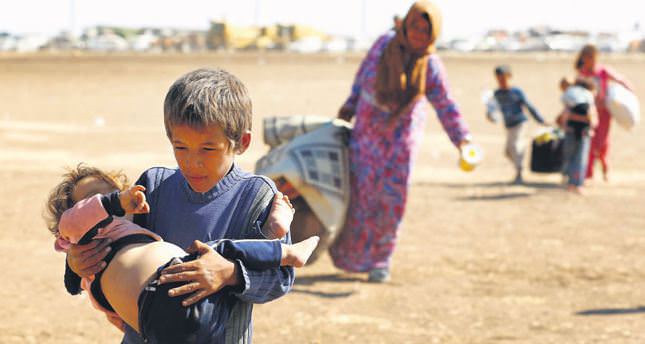
MESOPOTAMIA, between two rivers, the great Human disaster still, Kurdish persons are unprotected! Turkish powers will react only when frontiers will be transposed or have another interest against Kurdish forces and guilty about what happened in Syria?
«Well I think, our head of the intelligence community, Jim Clapper, has acknowledged that I think they underestimated what had been taking place in Syria (...) over the past couple of years, during the chaos of the Syrian civil war, where essentially you have huge swaths of the country that are completely ungoverned, they were able to reconstitute themselves and take advantage of that chaos» President of United States of America
 Cale Salih
Cale Salih «Why did the US help the Kurds in Iraq but leave Isis to massacre them in Syria?
The fall of Kobani is a microcosm for a policy that is doomed to fail. It was an avoidable tragedy» theguardian.com,
http://www.theguardian.com/commentisfree/2014/oct/07/us-kurds-iraq-isis-massacre-syria-kobani
«(...) The divergent US policy toward Kurds in Iraq and Syria is reflective of Washington’s general mistaken tendency to presume distinctions between the two countries that do not actually exist. According to US officials quoted this week in the Wall Street Journal, for instance, US airstrikes in Iraq are designed to help Iraqi forces beat back Isis, whereas in Syria, “We’re not trying to take ground away from them. We’re trying to take capability away from them.” A policy that decisively targets Isis in Iraq but half-heartedly in Syria is doomed to fail. It will, at best, only briefly postpone the immediate threat Isis poses to American interests in the region. And the new air strikes aren’t even really working.
A key difference between the new US war strategy in Kurdish-majority parts of the region was Washington’s decision to bolster its Kurdish partners on the ground in Iraq but not in Syria. In Iraq, the US not only carried out air strikes but also armed the Iraqi Kurdish peshmerga and sent military “advisors”. As a result, the peshmerga were able to provide ground intelligence to guide US air strikes, and, in conjunction with Kurdish fighters from Turkey and Syria, they followed up on the ground to retake important territories lost to Isis.
In Syria, the US has been more hesitant to develop such a bold Kurdish partnership. At first glance, the Kurdish fighting force in Syria – the People’s Defence Units (YPG), linked to the Kurdistan Worker’s Party (PKK), which the US designates as a terrorist group due to its decades-long war with Turkey – is a less natural partner than the widely recognized Kurdistan Regional Government (KRG) in Iraq. Yet it was YPG and PKK forces that provided the decisive support on the ground to the Iraqi Kurds, allowing KRG peshmerga to regain territory lost to Isis in Iraq. The US in great part owes the limited success of its airstrikes in north Iraq to the PKK and YPG. (...)»

Sem comentários:
Enviar um comentário
Muito obrigado pelo seu comentário! Tibi gratiās maximās agō enim commentarium! Thank you very much for your comment!